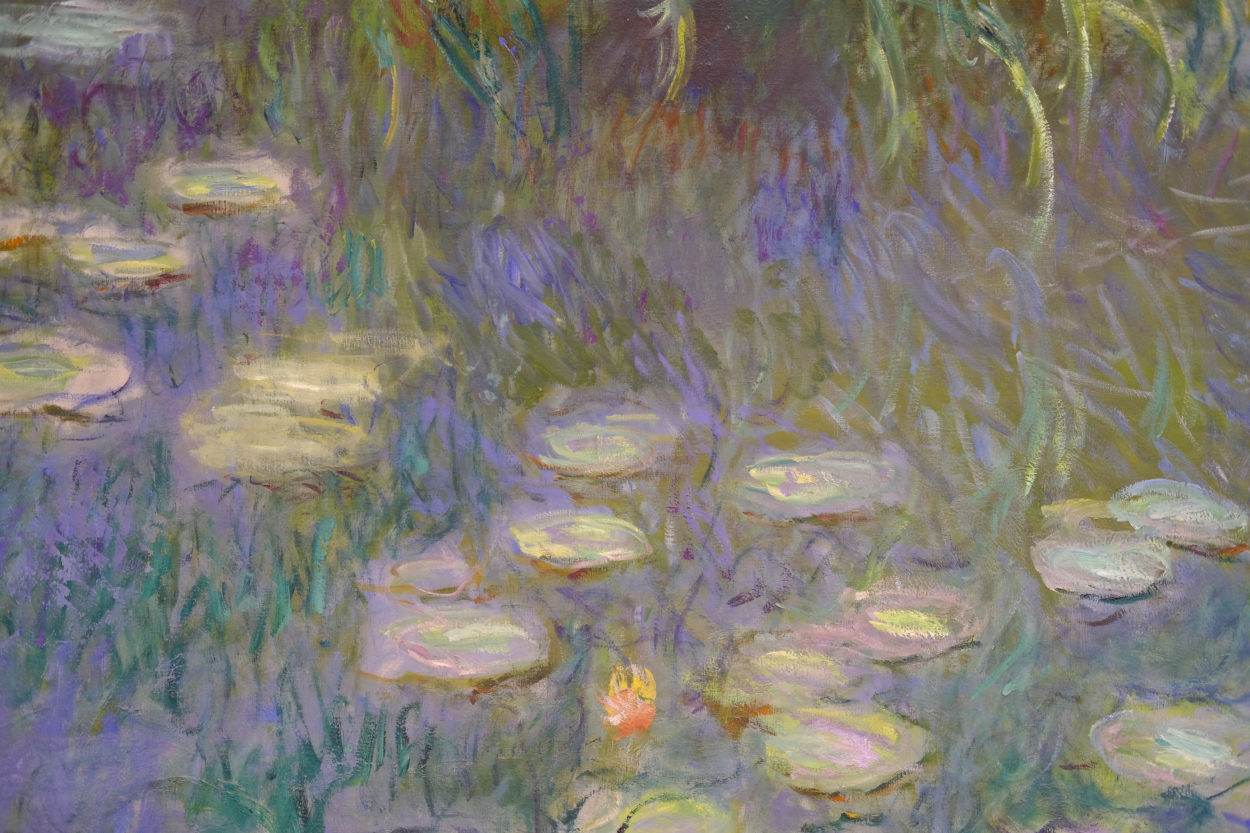Published
Reverie in l’Orangerie

Monet’s Water Lilies are one of very few works of art that have physically overwhelmed me on viewing. The life-sized canvases are entirely mesmerising, ‘no sky, no horizon, hardly any perspective or stable points of reference enabling the viewer to orient himself…’.

The intimacy is heightened further by their 360 degree installation in the two sequential oval rooms of Musée de l’Orangerie. On entering the second room, we found ourselves entirely alone – due to pandemic-related travel restrictions. The deserted room was an unexpected gift and truer to the artist’s original intent for the viewer:
Those with nerves exhausted by work would relax there, following the restful example of those still waters, and, to whoever entered it, the room would provide a refuge of peaceful meditation in the middle of a flowering aquarium.
Claude Monet, 1909